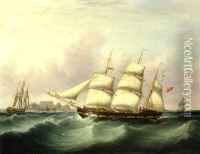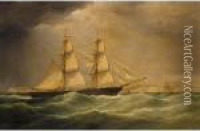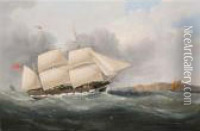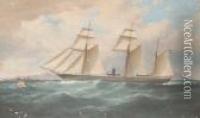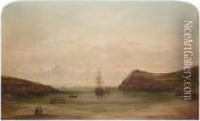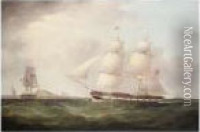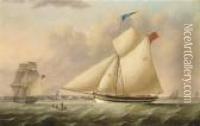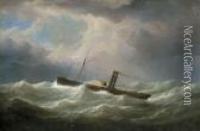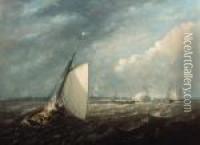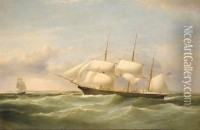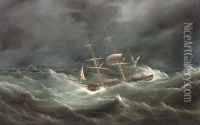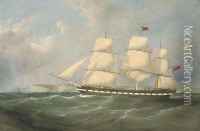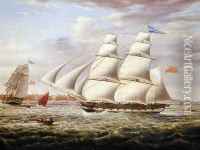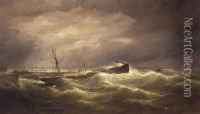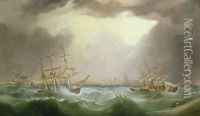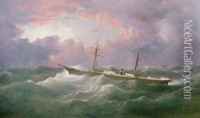Samuel Walters Paintings
Samuel Walters was a distinguished 19th-century British maritime artist, known for his detailed and realistic depictions of ships and maritime scenes. Born on November 1, 1811, in London, England, Walters developed an early interest in the sea and ships, which was likely influenced by his father, who was also a maritime painter. Walters moved to Liverpool, a bustling port city, which became a significant source of inspiration for his works.
Walters began his career as a shipwright, which provided him with a deep understanding of the construction and design of ships. This knowledge would later prove invaluable in his art, as it allowed him to create accurate and technically precise representations of maritime vessels. In the 1830s, he shifted his focus to painting, and by the 1840s, he had established himself as a prominent maritime artist.
Throughout his career, Walters painted a wide range of subjects, including naval battles, historical events, and portraits of specific ships. His works were celebrated for their attention to detail and their ability to capture the atmosphere of the sea. In particular, his paintings of clippers and other merchant ships are noted for their historical accuracy and aesthetic appeal.
Walters' reputation grew as he received commissions from wealthy merchants and shipowners who desired accurate depictions of their vessels. His paintings often included intricate details of the ship's rigging, hull, and sails, as well as the various conditions of the sea and sky, from calm waters to stormy weather.
Samuel Walters was a member of the Liverpool Academy of Arts and exhibited his paintings widely, including at the Royal Academy in London. His works continue to be highly regarded by collectors and maritime enthusiasts, and they can be found in maritime museums and private collections around the world.
Walters passed away on March 23, 1882, in Liverpool. His legacy lives on through his numerous paintings that document the era of sailing ships and contribute to the historical understanding of maritime culture in the 19th century.
